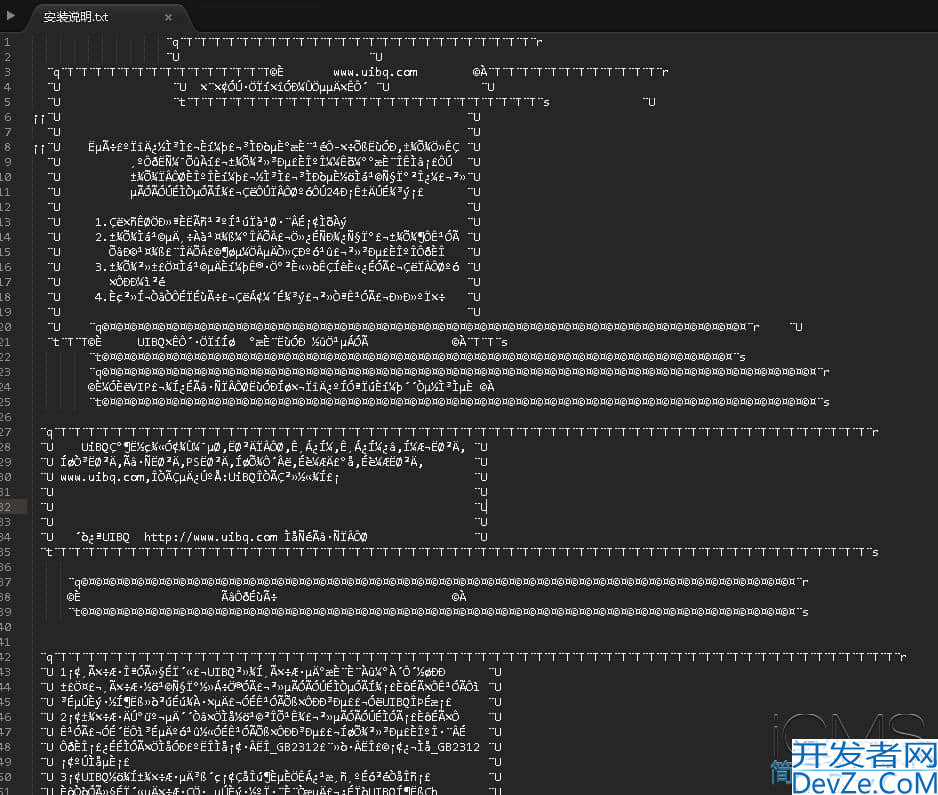Python高效实现PDF批量转Word的示例代码
目录
- 前言
- 一、核心技术选型和优化
- 二、批量转换实现
- 三、用户界面设计
- 四、提高效率的策略
- 四、用户界面流畅性
- 五、用户界面流畅性
- 六、100% 离线
- 六、关键点总结
前言
开发一个100%离线的PDF批量转Word软件,同时确保高效率和用户界面的流畅性,需要考虑以下几个关键方面:
一、核心技术选型和优化
pdf2docx库: 这是你的核心转换引擎。虽然pdf2docx已经很不错,但仍然需要针对你的特定需求进行优化。
安装: pip install pdf2docx
性能分析: 使用cProfile或line_profiler分析转换过程中的瓶颈。 重点关注CPU密集型操作,例如图像处理、字体渲染和布局分析。
参数调优: pdf2docx可能提供一些参数来控制转换质量和速度。 仔细阅读文档,尝试不同的参数组合,找到最佳平衡点。
多线程/多进程: 对于批量转换,这是提高效率的关键。 使用threading或multiprocessing模块并行处理多个PDF文件。 multiprocessing通常更适合CPU密集型任务,因为它能绕过python的全局解释器锁(GIL)。
-** 错误处理**: PDF文件格式复杂多样,转换过程中难免会遇到错误。 编写健壮的错误处理代码,例如使用try-except块捕获异常,并记录错误信息。 可以考虑跳过无法转换的文件,或者提供用户手动修复的选项。
其他依赖库: 选择一个合适的GUI库,例如Tkinter (Python自带), PyQt, wxPython或Kivy。 Tkinter简单易用,但功能相对有限。 PyQt和wxPython功能更强大,但需要额外安装。 Kivy适合跨平台开发,但学习曲线较陡峭。
文件选择对话框:: 使用GUI库提供的文件选择对话框,方便用户选择PDF文件和输出目录。
进度条: 使用GUI库提供的进度条控件,实时显示转换进度。
日志记录: 使用logging模块记录程序运行日志,方便调试和问题排查。
二、批量转换实现
参考以下代码实现。
import os
import threading
from pdf2docx import Converter
import time
import logging
# 配置日志
logging.basicConfig(level=logging.INFO, format='%(asctime)s - %(levelname)s - %(message)s')
def convert_pdf_to_docx(pdf_path, docx_path, progress_callback=None):
"""
将单个PDF文件转换为Word文件。
Args:
pdf_path: PDF文件路径。
docx_path: Word文件路径。
progress_callback: 可选的回调函数,用于更新进度条。
"""
try:
cv = Converter(pdf_path)
cv.convert(docx_path, start=0, end=None) # 可以指定转换的页码范围
cv.close()
logging.info(f"Successfully converted {pdf_path} to {docx_path}")
if progress_callback:
progress_callback(1) # 假设每个文件完成时进度增加1
except Exception as e:
logging.errorjavascript(f"Error converting {pdf_path}: {e}")
def BATch_convert(pdf_files, output_dir, progress_callback=None):
"""
批量将PDF文件转换为Word文件。
Args:
pdf_files: PDF文件列表。
output_dir: 输出目录。
progress_callback: 可选的回调函数,用于更新进度条。
"""
total_files = len(pdf_files)
converted_count = 0
threads = []
for pdf_file in pdf_files:
pdf_filename = os.path.basename(pdf_file)
docx_filename = os.path.splitext(pdf_filename)[0] + ".docx"
docx_path = os.path.join(output_dir, docx_filename)
# 创建线程进行转换
thread = threading.Thread(target=convert_pdf_to_docx, args=(pdf_file, docx_path, progress_callback))
threads.append(thread)
thread.start()
# 等待所有线程完成
for thread in threads:
thread.join()
logging.info("Batch conversion completed.")
# 示例用法 (需要替换为实际的文件列表和目录)
if __name__ == '__main__':
pdf_files = ["path/to/file1.pdf", "path/to/file2.pdf"] # 替换为你的PDF文件列表
output_dir = "path/to/output" # 替换为你的输出目录
# 创建输出目录
if not os.path.exists(output_dir):
os.makedirsTLdzyIiiL(output_dir)
# 模拟进度条回调函数
def update_progress(increment):
global converted_count
converted_count += increment
print(f"Progress: {converted_count}/{len(pdf_files)}")
start_time = time.time()
batch_convert(pdf_files, output_dir, update_progress)
end_time = time.time()
print(f"Total time taken: {end_time - start_time:.2f} seconds")
三、用户界面设计
- 简洁易用:界面应该简洁明了,用户能够轻松找到所需的功能。
- 文件选择:提供文件选择对话框,允许用户选择单个或多个PDF文件。
- 目录选择::提供目录选择对话框,允许用户选择输出目录。
- 进度显示:使用进度条控件实时显示转换进度。
- 状态信息:显示转换状态信息,例如已转换文件数、剩余文件数、错误信息等。
- 取消功能:提供取消转换的功能。
- 设置选项 (可选):可以提供一些设置选项,例如转换质量、是否保留图像、是否合并多个PDF文件等。
四、提高效率的策略
1、多线程/多进
重如前所述,这是提高批量转换效率的关键。
2、异步操作
在GUI线程中执行耗时操作会导致界面卡顿。使用线程或进程将转换任务放到后台执行,避免阻塞GUI线程。
3、优化图像处理
PDF文件中的图像可能会影响转换速度。 可以尝试降低图像分辨率或使用更高效的图像处理算法。
4、缓存
如果需要多次转换相同的文件,可以考虑将转换结果缓存起来,避免重复转换。
3、避免不必要的重绘
在更新GUI界面时,尽量避免不必要的重绘操作,例如只更新进度条的值,而不是整个界面。
四、用户界面流畅性
多线程/多进程:如前所述,这是提高批量转换效率的关键。
异步操作:在GUI线程中执行耗时操作会导致界面卡顿。使用线程或进程将转换任务放到后台执行,避免阻塞GUI线程。
优化图像处理::PDF文件中的图像可能会影响转换速度。可以尝试降低图像分辨率或使用更高效的图像处理算法。
缓存:如果需要多次转换相同的文件,可以考虑将转换结果缓存起来,避免重复转换。
避免不必要的重绘:在更新GUI界面时,尽量避免不必要的重绘操作,例如只更新进度条的值,而不是整个界面。
五、用户界面流畅性
避免长时间阻塞GUI线程:这是导致界面卡顿的主要原因。 将耗时操作放到后台线程执行。
使用after方法 (Tkinter):Tkinter的after方法允许你延迟执行某个函数,从而避免阻塞GUI线程。 可以使用after方法定期更新进度条。
使用QThread (PyQt):PyQt提供了QThread类,用于在后台线程中执行任务。 可以使用信号和槽机制将后台线程的进度信息传递给GUI线程。
使用wx.CallAfter (wxPython):wxPython提供了wx.CallAfter函数,用于在GUI线程中执行某个函数。 可以使用wx.CallAfter函数更新GUI界面。
避免频繁更新GUI:频繁更新GUI界面会消耗大量资源。尽量减少更新频率,例如只在进度发生变化时才更新进度条。
六、100% 离线
确保所有依赖库都已安装:重在打包软件时,确保所有依赖库都已包含在内。可以使用PyInstaller、cx_Freeze或Nuitka等工具将Python代码打包成可执行文件。
不依赖网络资源:避免使用任何需要网络连接的资源,例如在线字体、在线API等。
示例代码 (使用Tkinter和threading):
import tkinter as tk
from tkinter import filedialog, messagebox
import os
import threading
from pdf2docx import Converter
import time
import logging
# 配置日志
logging.basicConfig(level=logging.INFO, format='%(asctime)s - %(levelname)s - %(message)s')
def convert_pdf_to_docx(pdf_path, docx_path, progress_callback=None):
"""
将单个PDF文件转换为Word文件。
Args:
pdf_path: PDF文件路径。
docx_path: Word文件路径。
progress_callback: 可选的回调函数,用于更新进度条。
"""
try:
cv = Converter(pdf_path)
cv.convert(docx_path, start=0, end=None) # 可以指定转换的页码范围
cv.close()
logging.info(f"Successfully converted {pdf_path} to {docx_path}")
if progress_callback:
progress_callback(1) # 假设每个文件完成时进度增加1
exphpcept Exception as e:
logging.error(f"Error converting {pdf_path}: {e}")
return False
return True
def batch_convert(pdf_files, output_dir, progress_callback=None):
"""
批量将PDF文件转换为Word文件。
Args:
pdf_files: PDF文件列表。
output_dir: 输出目录。
progress_callback: 可选的回调函数,用于更新进度条。
"""
total_files = len(pdf_files)
converted_count = 0
threads = []
success_count = 0
for pdf_file in pdf_files:
pdf_filename = os.path.basename(pdf_file)
docx_filename = os.path.splitext(pdf_filename)[0] + ".docx"
docx_path = os.path.join(output_dir, docx_filename)
# 创建线程进行转换
thread = threading.Thread(target=convert_pdf_to_docx_wrapper, args=(pdf_file, docx_path, progress_callback))
threads.append(thread)
thread.start()
# 等待所有线程完成
for thread in threads:
thread.join()
logging.info("Batch conversion completed.")
return success_count
def convert_pdf_to_docx_wrapper(pdf_path, docx_path, progress_callback):
global success_count
if convert_pdf_to_docx(pdf_path, docx_path, progress_callback):
success_count += 1
def select_pdf_files():
global pdf_files
pdf_files = filedialog.askopenfilenames(filetypes=[("PDF files", "*.pdf")])
pdf_listbox.delete(0, tk.END)
for file in pdf_files:
pdf_listbox.iphpnsert(tk.END, os.path.basename(file))
def select_output_dir():
global output_dir
output_dir = filedialog.askdirectory()
output_dir_label.config(text=f"Output Directory: {output_dir}")
def start_conversion():
global pdf_files, output_dir, success_count
if not pdf_files:
messagebox.showerror("Error", "Please select PDF files.")
return
if not output_dir:
messagebox.showerror("Error", "Please select an output directory.")
return
total_files = len(pdf_files)
progress_var.set(0)
progress_bar["maximum"] = total_files
success_count = 0
def update_progress(increment):
progress_var.set(progress_var.get() + increment)
root.update_idletasks() # 强制更新GUI
def conversion_thread():
start_time = time.time()
successful_conversions = batch_convert(pdf_files, output_dir, update_progress)
end_time = time.time()
messagebox.showinfo("Info", f"Conversion completed. Successfully converted {successful_conversions} out of {total_files} files. Total time taken: {end_time - start_time:.2f} seconds")
# 启动后台线程
threading.Thread(target=conversion_thread).start()
# GUI setup
root = tk.Tk()
root.title("PDF to Word Converter")
pdf_files = []
output_dir = ""
success_count = 0
# PDF file selection
pdf_button = tk.Button(root, text="Select PDF Files", command=select_pdf_files)
pdf_button.pack(pady=10)
pdf_listbox = tk.Listbox(root, width=50)
pdf_listbox.pack()
# Output directory selection
output_button = tk.Button(root, text="Select Output Directory", command=select_output_dir)
output_button.pack(pady=10)
output_dir_label = tk.Label(root, text="Output Directory: ")
output_dir_label.pack()
# Progress bar
progress_var = tk.IntVar()
progress_bar = tk.Scale(root, variable=progress_var, orient=tk.HORIZONTAL, length=300js, showvalue=False)
progress_bar.pack(pady=10)
# Start conversion button
convert_button = tk.Button(root, text="Start Conversion", command=start_conversion)
convert_button.pack(pady=10)
root.mainloop()
六、关键点总结
性能分析和优化是关键:不要盲目地使用多线程,先找到瓶颈,然后针对性地进行优化。
错误处理至关重要:PDF文件格式复杂,要做好充分的错误处理准备。
用户界面要简洁易用:让用户能够轻松完成转换任务。
使用异步操作,避免阻塞GUI线程:保证用户界面的流畅性。
充分测试: 在不同的PDF文件上进行测试,确保软件的稳定性和可靠性。
到此这篇关于Python高效实现PDF批量转Word的示例代码的文章就介绍到这了,更多相关Python PDF转Word内容请搜索编程客栈(www.devze.com)以前的文章或继续浏览下面的相关文章希望大家以后多多支持编程客栈(www.devze.com)!







 加载中,请稍侯......
加载中,请稍侯......
精彩评论